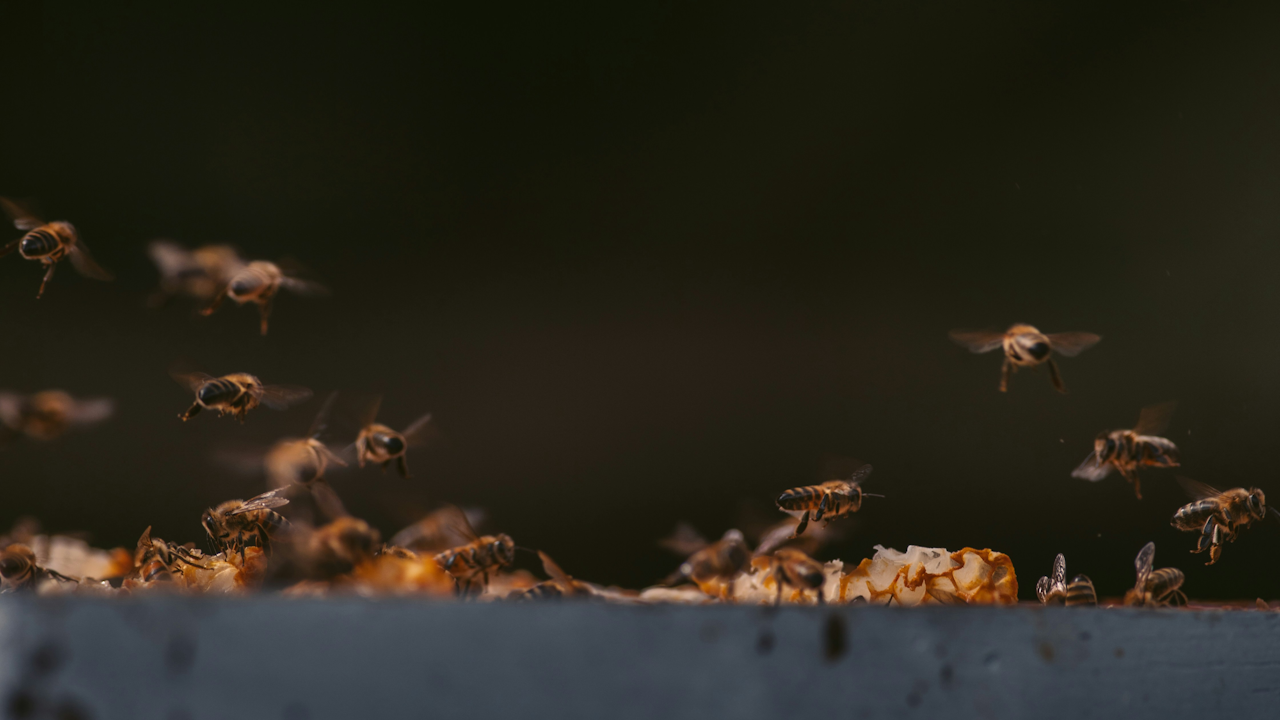Honey bees possess one of the most remarkable communication systems in the natural world. Their bodies serve as living instruments that transmit information about food, danger, and colony needs. Among all modes of communication in the hive, none is more astonishing than the dance language. This dance, performed on the vertical comb surface in darkness, allows a foraging bee to tell her nestmates where to find nectar and pollen. Although bees also use scent, vibration, and direct contact, the dance stands out for its precision and sophistication.
The most famous component of bee dance behavior is the waggle dance. When a forager discovers a valuable food source, she returns to the hive with scented nectar or pollen clinging to her body. After being greeted by hive mates, she climbs onto the comb and begins a sequence of movements. The central part of the dance is the waggle run. During this phase, she vibrates her abdomen from side to side while moving forward in a straight line. This seemingly simple action conveys two critical pieces of information. The angle of the waggle run in relation to the vertical surface of the comb indicates the direction of the food source relative to the sun, and the duration of the waggle portion signals the distance.
Direction is communicated through geometry. Inside a dark hive, the dancer orients her run at a specific tilt. If the waggle run points directly upward on the comb, this means the food lies straight toward the sun. If she dances at an angle to the left or right, that angle correlates with the direction left or right of the sun’s position outside. The remarkable part is that bees adjust this angle over time because the sun moves across the sky. The dancer relies on an internal clock, allowing her to compensate for the sun’s changing position even though she performs the dance indoors without seeing the sky.
Distance is conveyed through timing. A long waggle run indicates that the food source is far away, while a brief run signals proximity. The number of times the dancer repeats the waggle run also contributes to the message. Recruit bees, those that follow the dancer, learn that more repetitions often signal a high quality source that is worth visiting. The relationship between the length of the waggle run and distance has been studied thoroughly. While the exact calibration can vary across species and environmental conditions, the pattern is consistent enough to guide foragers with surprising accuracy.
After completing the waggle portion, the dancer circles back to her starting point, then begins another cycle. This looping motion gives the dance a shape somewhat like a figure eight. Followers stand near the dancer, pressing their antennae and bodies against her. Through this close contact they detect vibrations generated during each waggle run. These vibrations carry directional information, supplementing what followers interpret from the dancer’s movements. Bees also sense subtle air currents generated by the dancer’s wings. All of these cues combine to create a layered communication channel that can be interpreted even in near total darkness.
Scent plays a supporting role in the dance language. The dancer arrives carrying the odor of the flowers she visited. Followers often sample nectar she regurgitates, which gives them a taste of what they should seek. These floral scents help guide recruits once they reach the general location indicated by the dance movements. Rather than relying on vision alone, they use the dancer’s scent signature to find the specific blossoms. In this way, the dance does not only tell bees where to go; it primes their senses for what they should detect once they arrive.
Not all dances in the hive are waggle dances. Bees also perform a simpler movement known as the round dance. This dance is used when food sources are very close to the hive. Instead of communicating direction and distance with the same level of precision, the round dance signals that food can be found nearby. Recruits then leave the hive and search outward in widening circles, relying heavily on scent to pinpoint the source. Although less detailed, the round dance still provides essential information that promotes efficient foraging.
Environmental factors influence dance behavior. Wind, obstacles, and the complexity of the surrounding landscape can affect how recruits interpret the dance. Bees sometimes adjust their foraging tactics based on these challenges. The dance language has also evolved differently among honey bee species. For example, giant honey bees perform their dances on exposed comb surfaces in open daylight. Their dances rely more heavily on visual cues, while the dances of cavity dwelling species emphasize vibration and tactile contact.
The dance language also plays a role in the colony’s internal dynamics. During times of plenty, foragers dance more frequently and with greater enthusiasm, attracting more bees to abundant flowers. During shortages, dances become rare or muted. Scouts searching for new nest sites also use a version of the waggle dance to evaluate potential locations. They dance to advertise high quality sites, gradually building consensus among the colony until a unanimous decision emerges. This process demonstrates that the dance language is not only about gathering food but also about coordinating collective decisions.
In essence, bee dance communication is a masterpiece of natural engineering. It solves a fundamental problem faced by foraging animals: how to transmit complex spatial information without spoken language or visual maps. Through coordinated movements, vibrations, and scent cues, bees have developed a method that is efficient, precise, and adaptable. Their dances allow thousands of individuals to act with the unity of a single organism. By translating motion into meaning, bees achieve cooperation on a remarkable scale, offering a profound example of how communication shapes life within a community.

